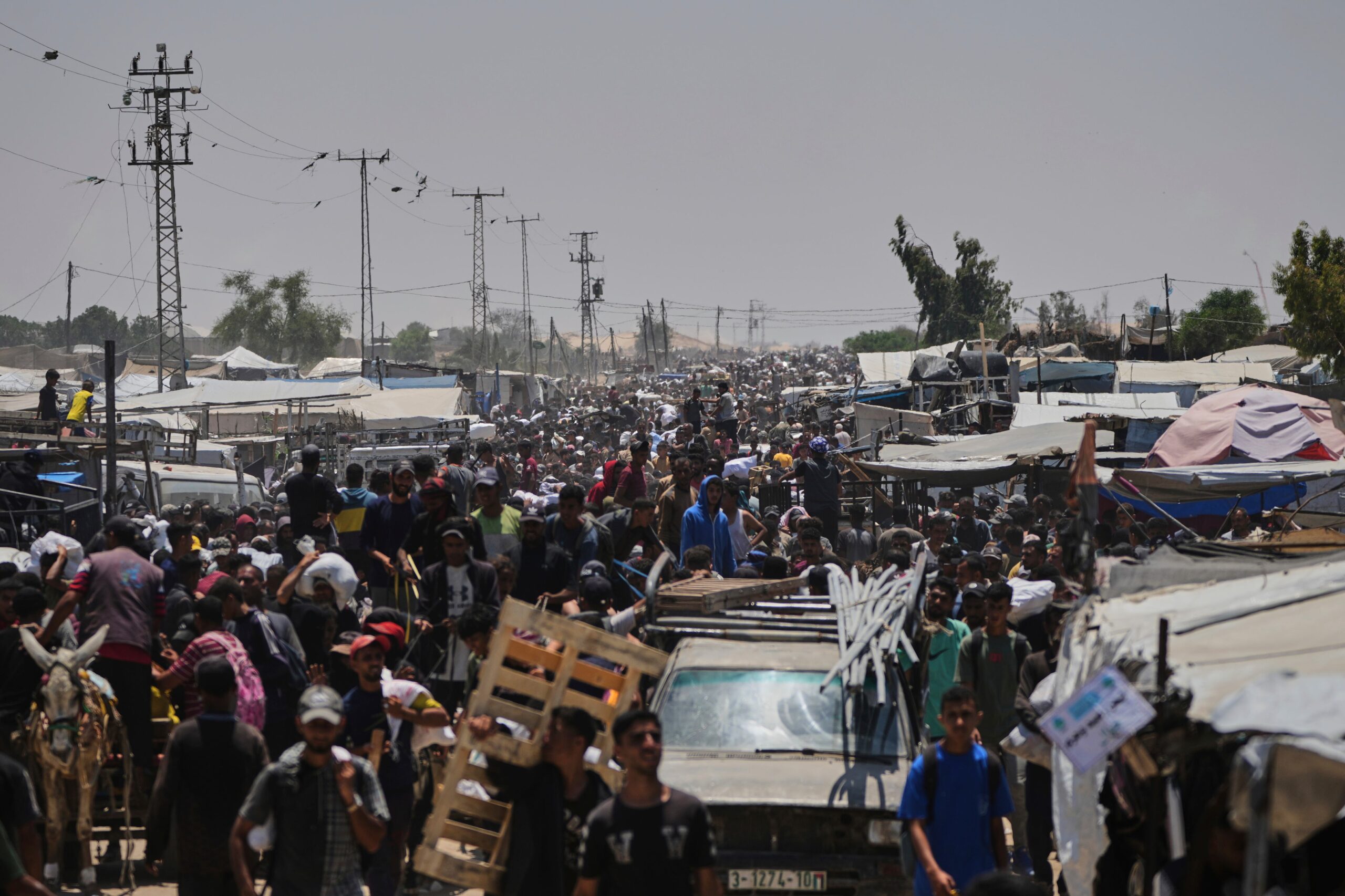JerusalemAccording to local media, Israel’s defense minister has laid out plans to cram hundreds of thousands of Palestinians into a confined area of the Gaza Strip near the Egyptian border.
It seems to be the most recent iteration of the Israeli government’s ambitions to keep long-term control of the region and remove a large portion of its two million-person population. Critics claim that since Israel’s invasion and embargo have rendered Gaza essentially uninhabitable, that would amount to forceful relocation in violation of international law.
The goal, according to Israeli authorities, is to keep the civilian population apart from Hamas, which still holds scores of hostages taken in the Oct. 7 attack that started the war 21 months ago. They claim that after that, Palestinians would have the choice to leave the country.
In addition to expressing sympathy for the huge exodus of Palestinians from Gaza, U.S. President Donald Trump has stated that he is closing in on a truce and expects to ultimately end the conflict.
A community of humanitarians built on top of Rafah’s ruins
In a classified briefing with Israeli military reporters on Monday, Defense Minister Israel Katz presented the most recent plans. A request for comment on their reports, which were published in a number of Israeli media sources, was not answered by his office.
According to reports, Katz claimed to have given the Israeli military instructions to create blueprints for the construction of what he called a humanitarian city in Rafah, the southernmost city of Gaza that has been severely damaged by the conflict and is currently mostly deserted.
According to reports, Katz stated that once Palestinians reach the zone, they will not be allowed to leave.
In order to eventually relocate the whole population to Rafah, the military would first relocate 600,000 Palestinians from an existing so-called humanitarian zone along the shore. As Israeli troops guarded the perimeter, Katz said Israel was looking for an unidentified international organization to provide aid.
He claimed that during a 60-day ceasefire that Trump and Israeli Prime Minister Benjamin Netanyahu are debating in Washington this week, the IDF may begin constructing the city.
In exchange for a permanent ceasefire and the evacuation of Israeli forces, Hamas has stated that it will only free the remaining hostages. Palestinians oppose any efforts to uproot them because they see Gaza as an essential part of their homeland.
Rights organizations observe plans for mass evictions.
Both Netanyahu and Trump have advocated for what they call voluntary emigration, the relocation of Gaza’s residents to other nations. Netanyahu stated that Palestinians ought to have the freedom to decide whether or not to remain during their discussion at the White House on Monday.
Palestinians worry that Israel will never permit them to return, even if they temporarily flee the conflict. This could lead to a recurrence of the enormous exodus that took place prior to and during the 1948 war surrounding the founding of Israel.
According to Israel’s Haaretz daily, Katz said he hoped the evacuation plan would be implemented and that Netanyahu was already spearheading efforts to identify nations that would accept Palestinians.
Rights organizations worry that the population concentration around the Egyptian border would lead to dire circumstances, forcing Palestinians to flee.
According to Tania Hary, executive director of Gisha, an Israeli organization that supports Palestinians’ right to freedom of movement, “forcing people into what amounts to a large concentration camp echoes dark chapters of history.”
She claimed that Israel’s leadership has not held back in its determination to drive Palestinians out of Gaza and keep long-term authority over substantial portions of the region.
There is already an aid mechanism supported by Israel.
In Rafah, Israel and the US have already launched an assistance distribution program that has been tainted by controversy and bloodshed.
According to local hospitals, hundreds of Palestinians have been killed or injured while attempting to reach locations managed by the Gaza Humanitarian Foundation, a contractor backed by the United States and Israel.
Israeli forces have opened fire on groups of civilians en route to the sites on multiple occasions, according to Palestinian witnesses and health experts. The military claims to have fired warning bullets at individuals who behaved suspiciously when approaching its personnel.
Since the locations are in Israeli military zones that are closed to independent media, GHF denies that there has been any violence there or nearby. The foundation refuted claims made by two U.S. contractors to The Associated Press that their coworkers deployed stun grenades and live ammo while throngs flocked for food. Additionally, GHF has denied any participation in any planning for population transfers.
However, Netanyahu seemed to connect the two programs during a May news conference, stating that Israel would carry out the new aid program before establishing a sterile area in southern Gaza that was free of Hamas and where the Palestinian population would be moved.
Netanyahu has declared that Israel will continue to have long-term control over Gaza and has excluded the internationally recognized Palestinian Authority, which is headed by Hamas’ political adversaries, from any involvement.
